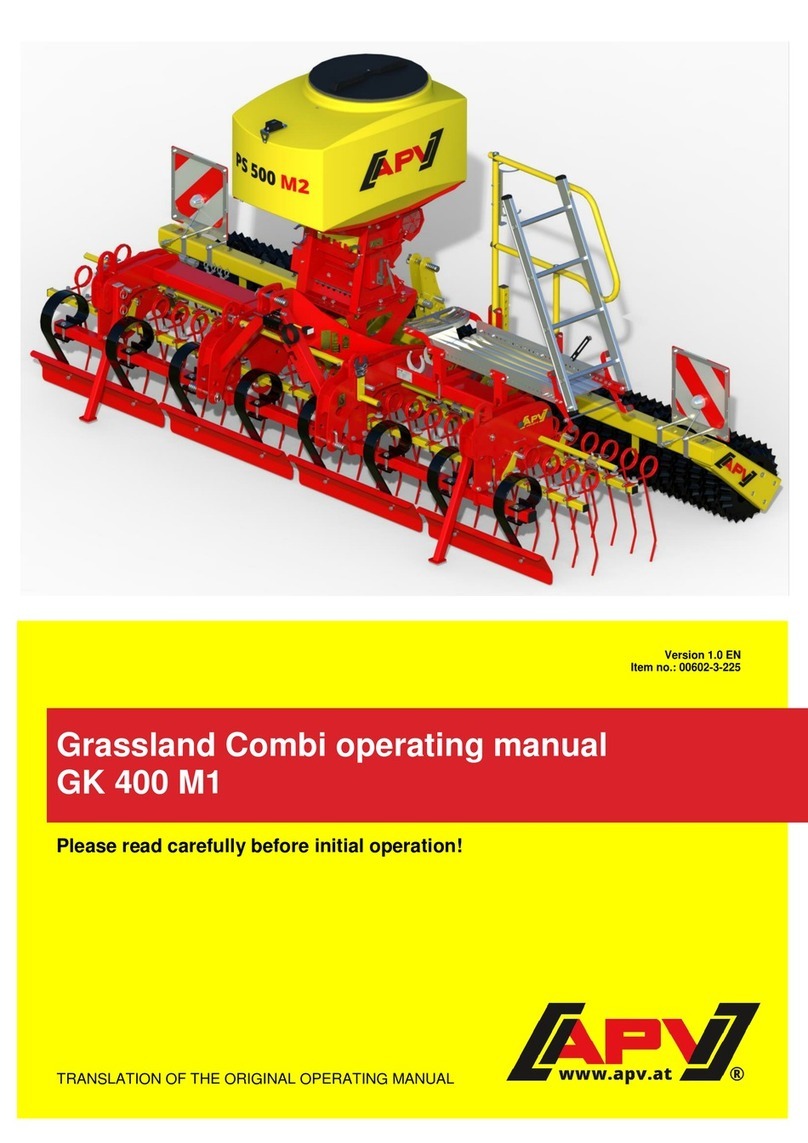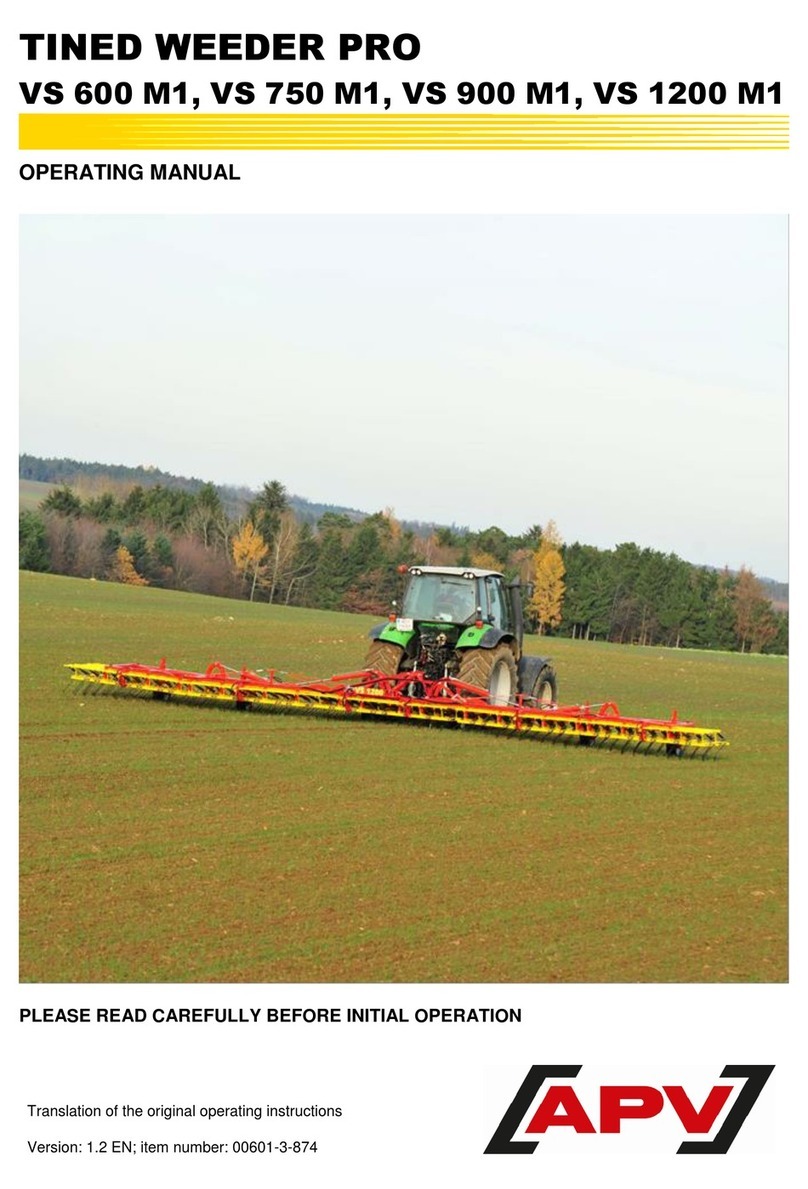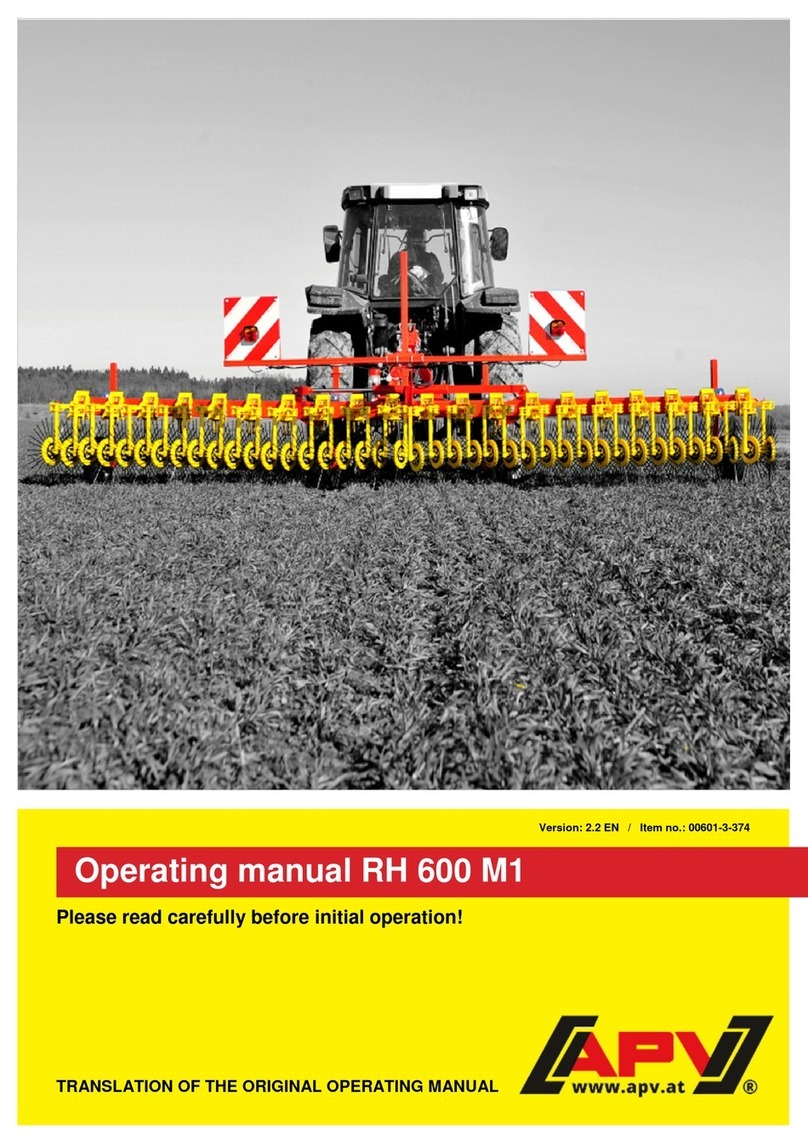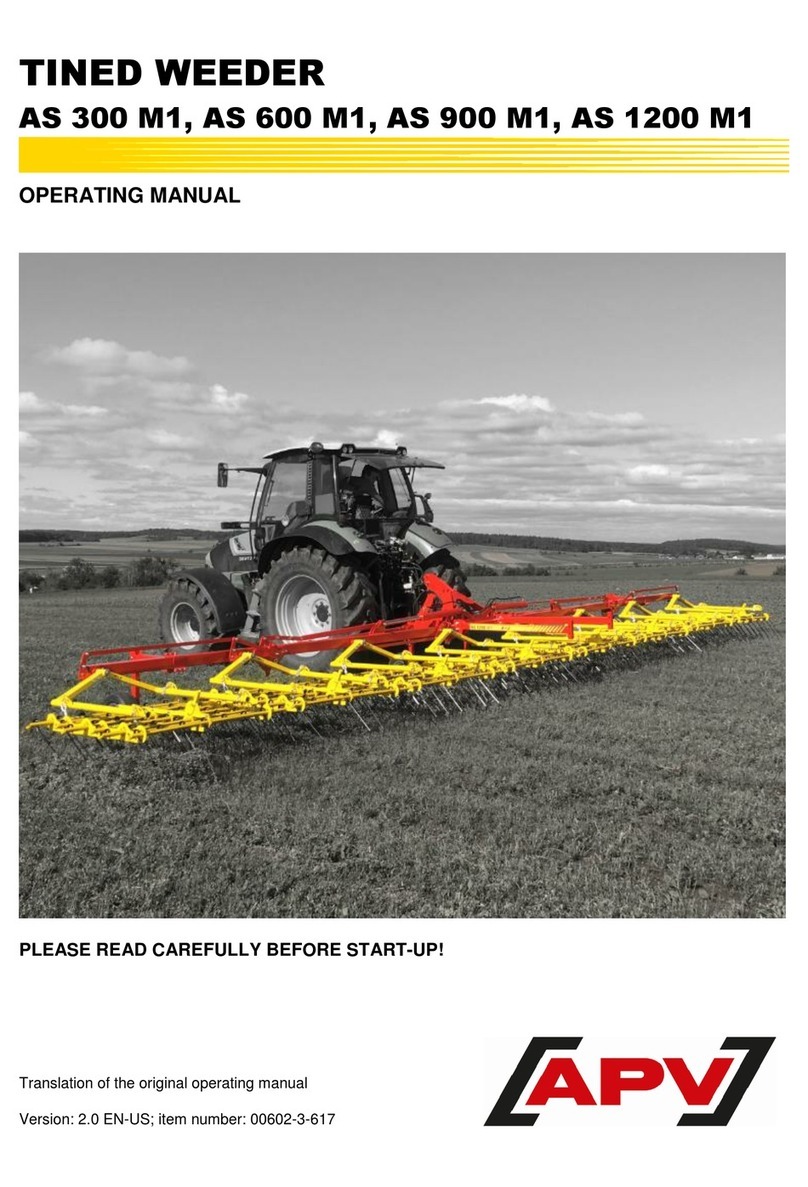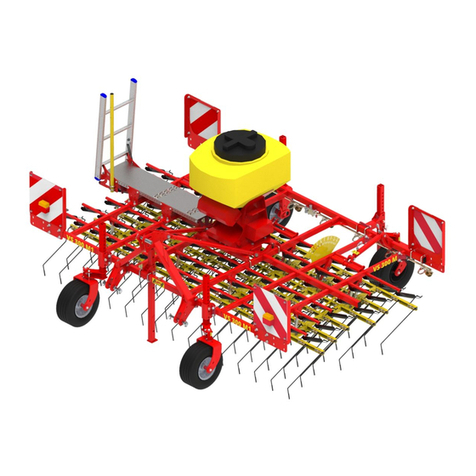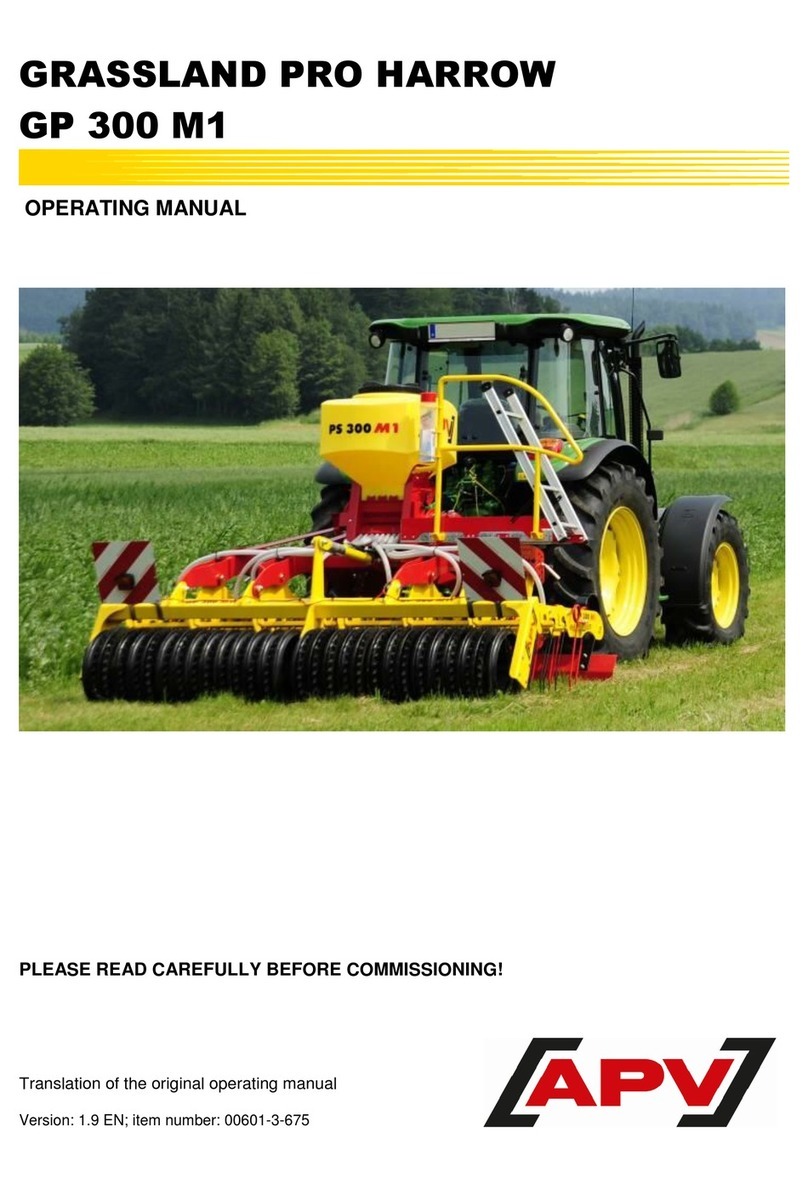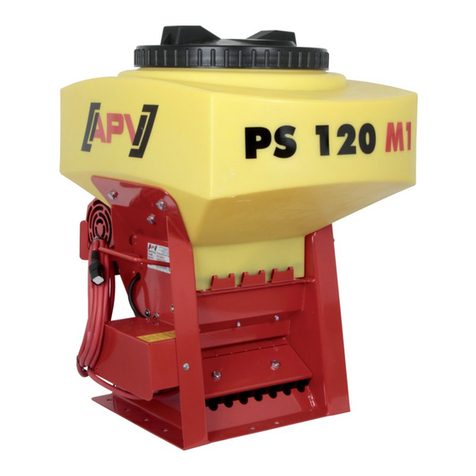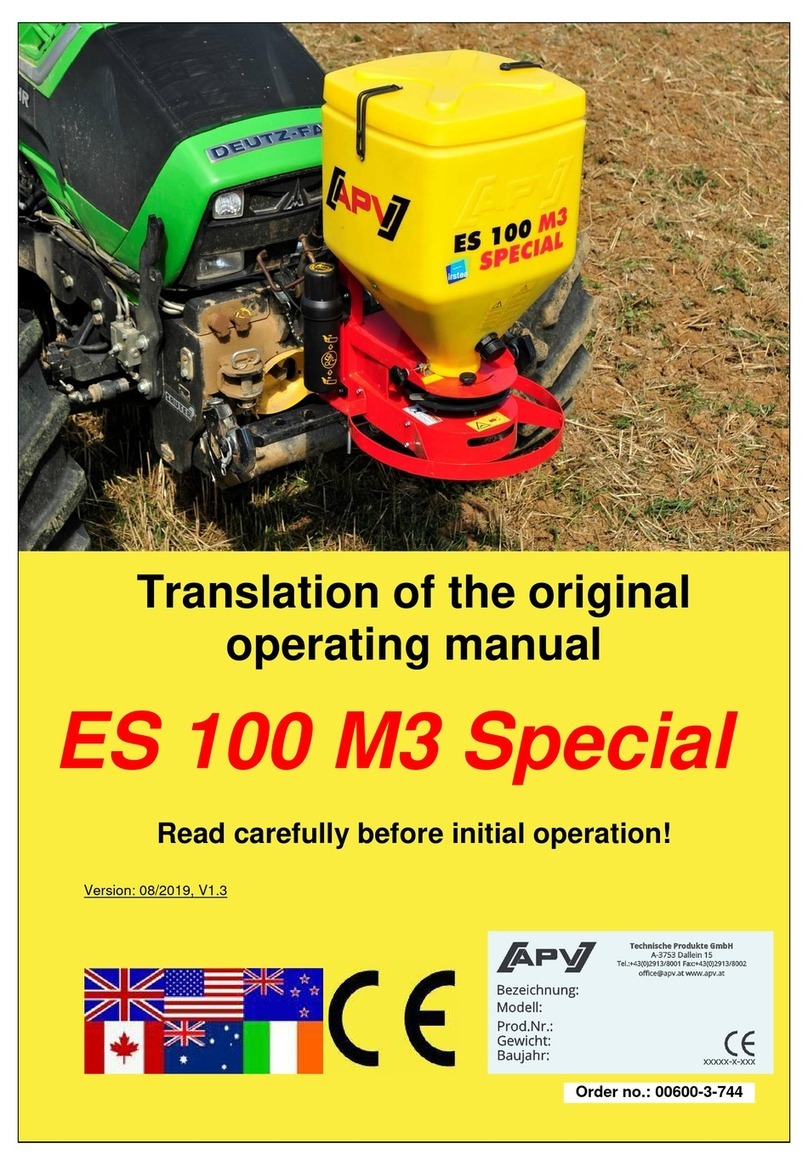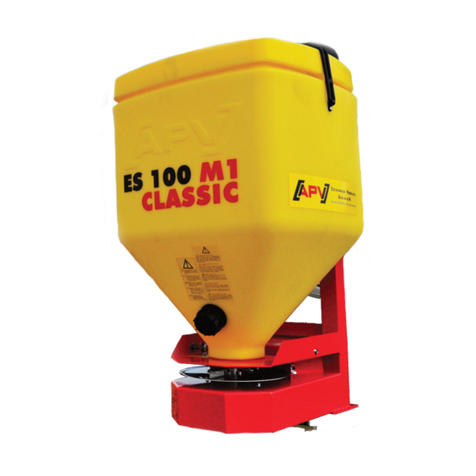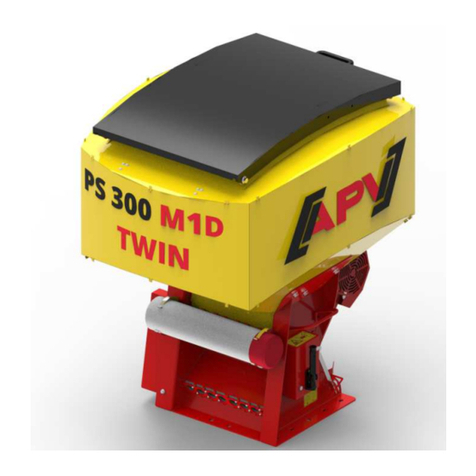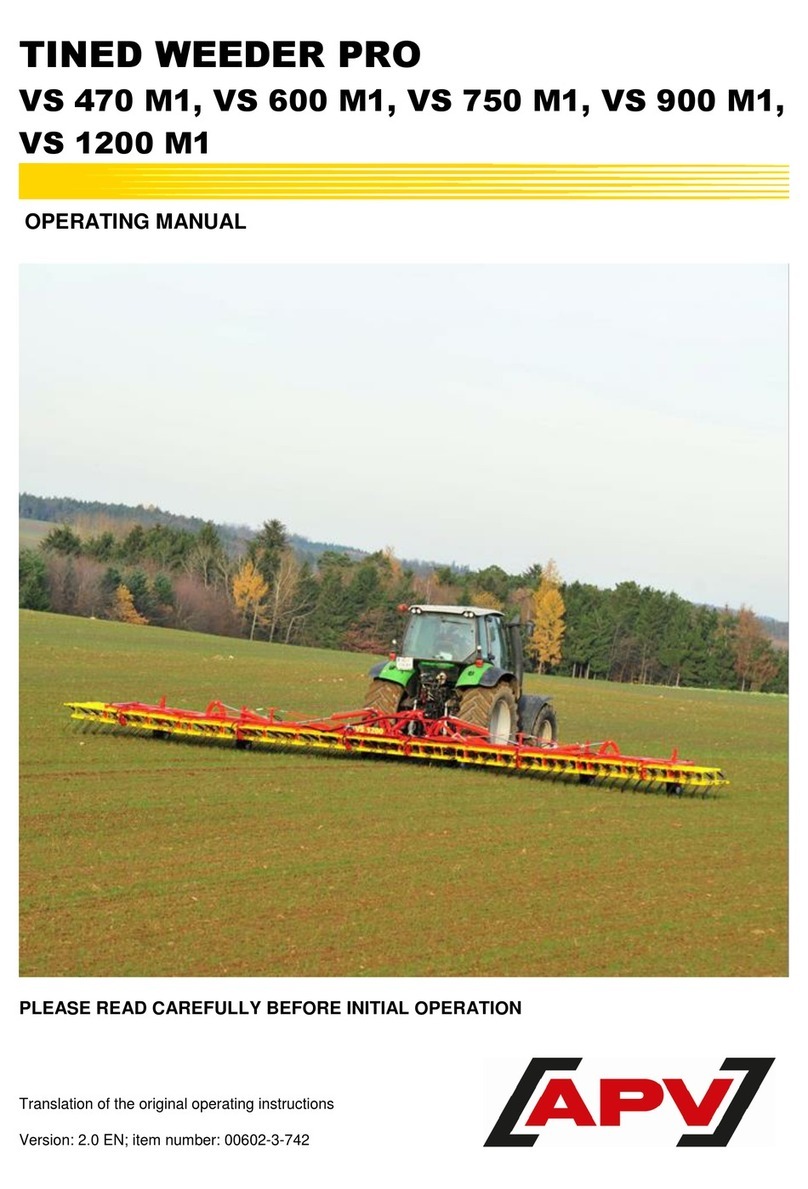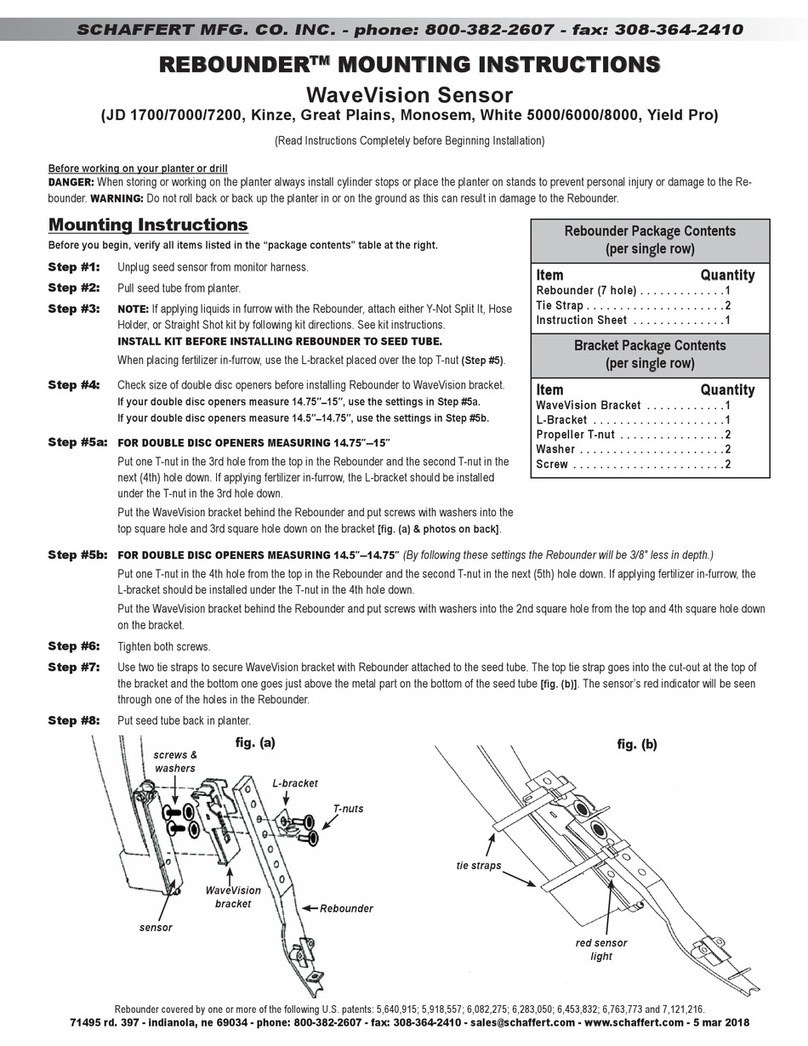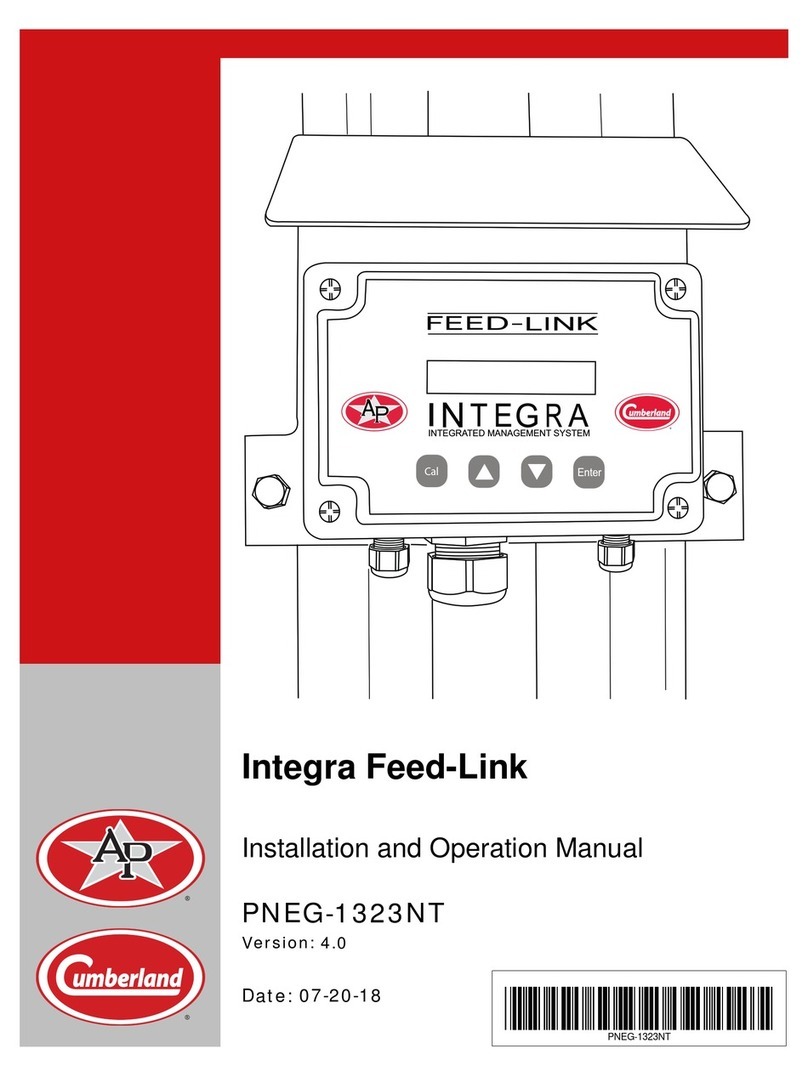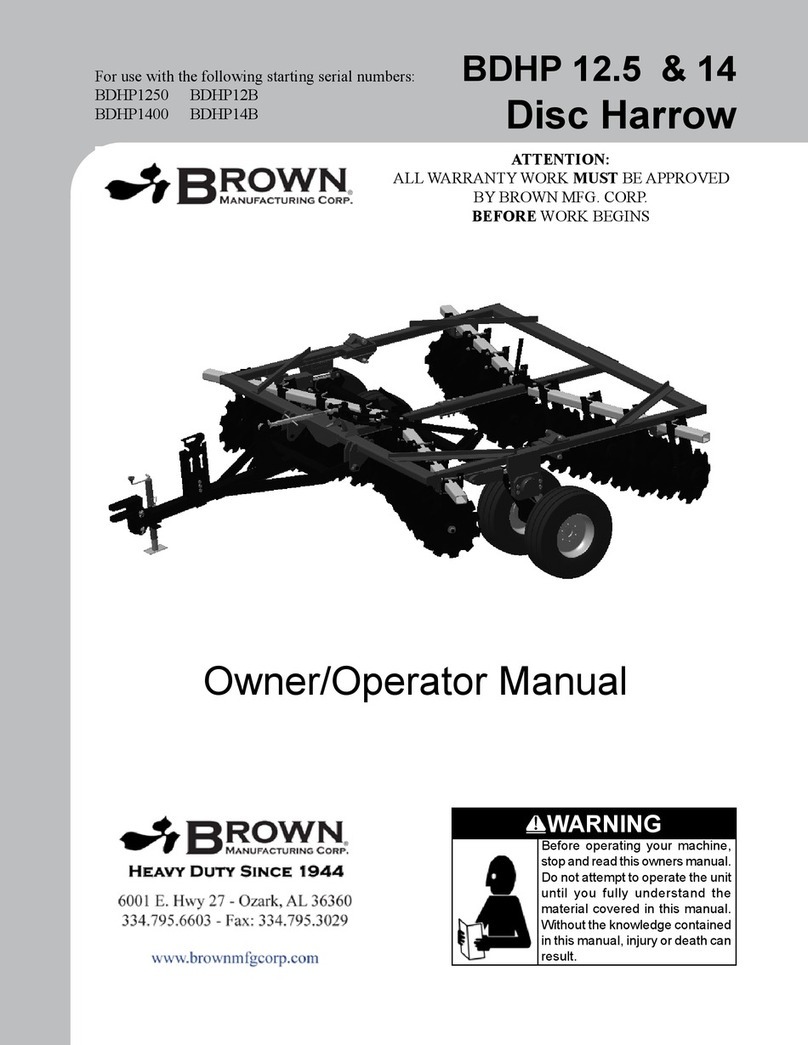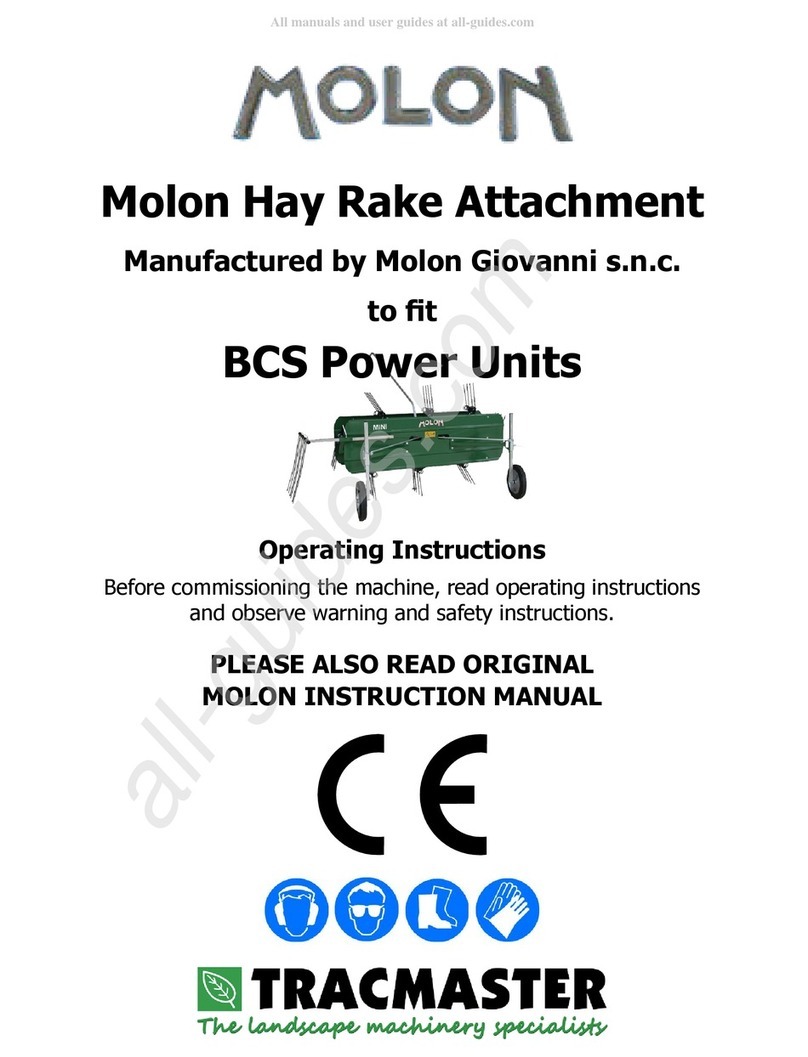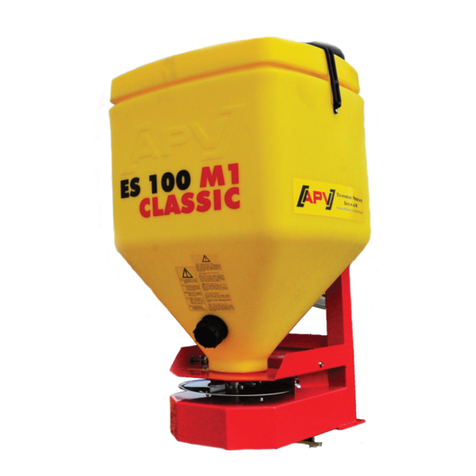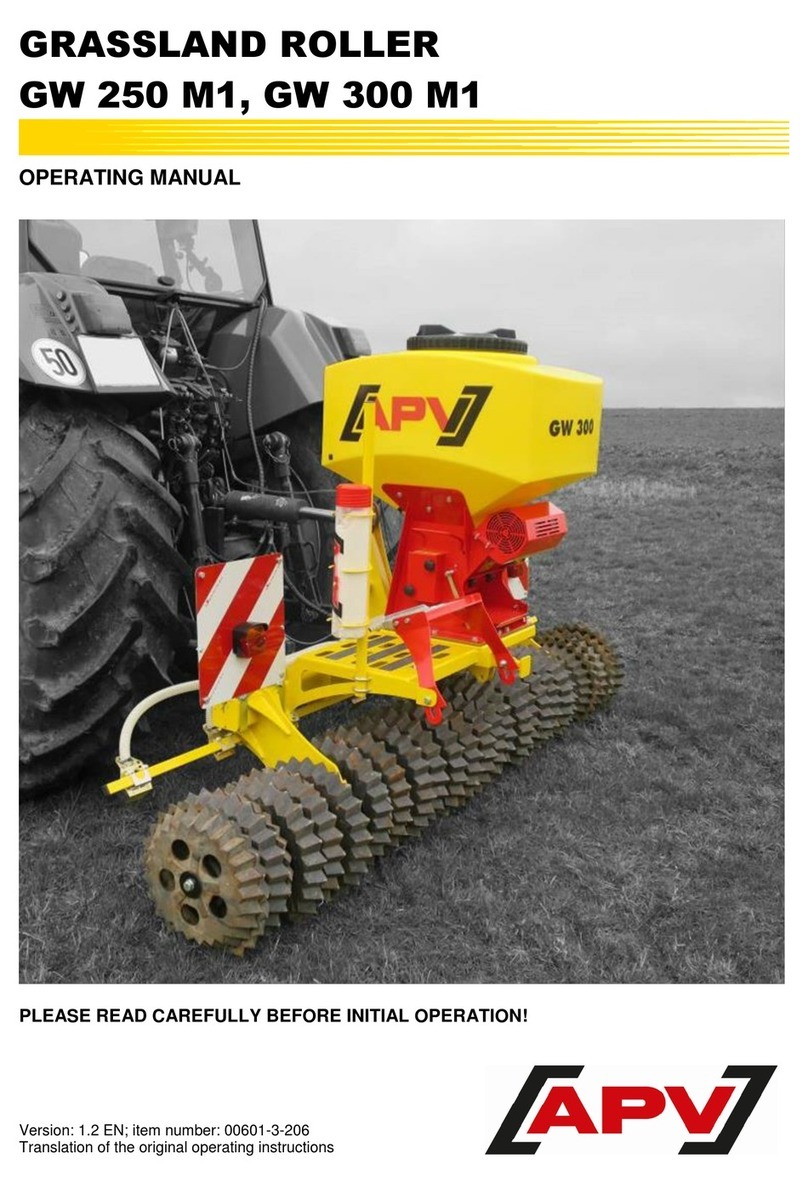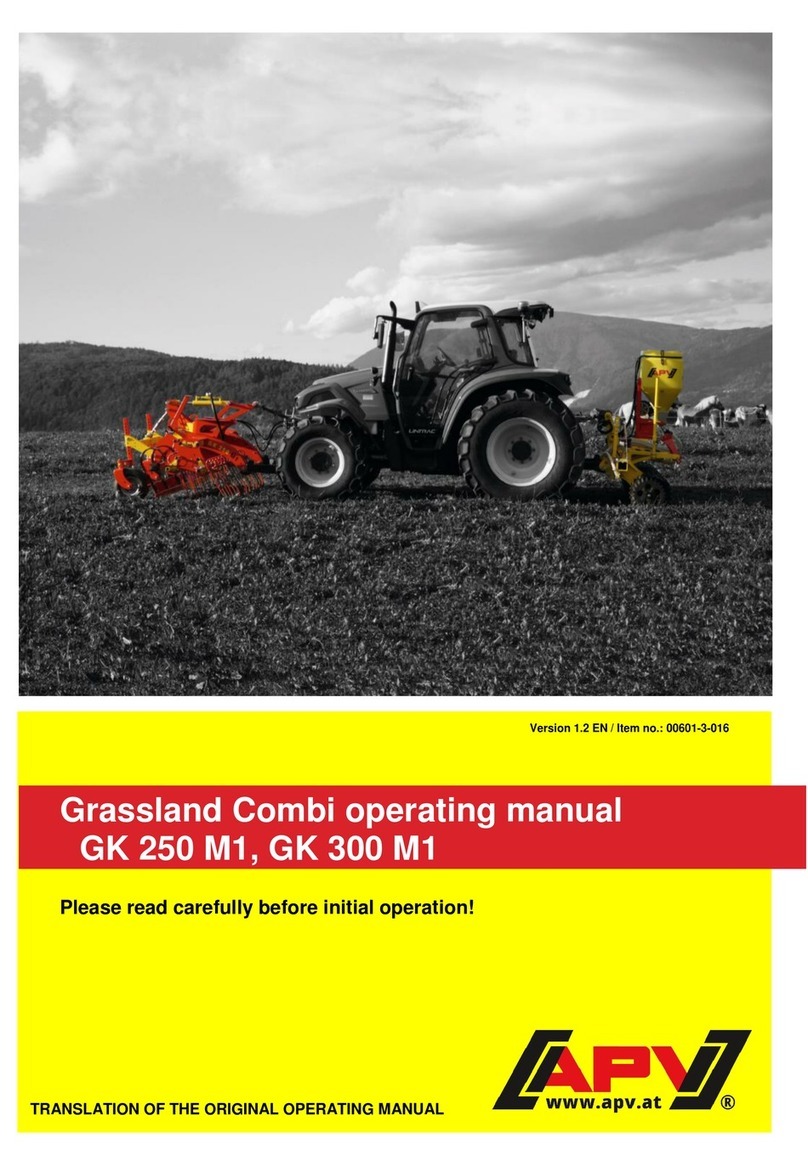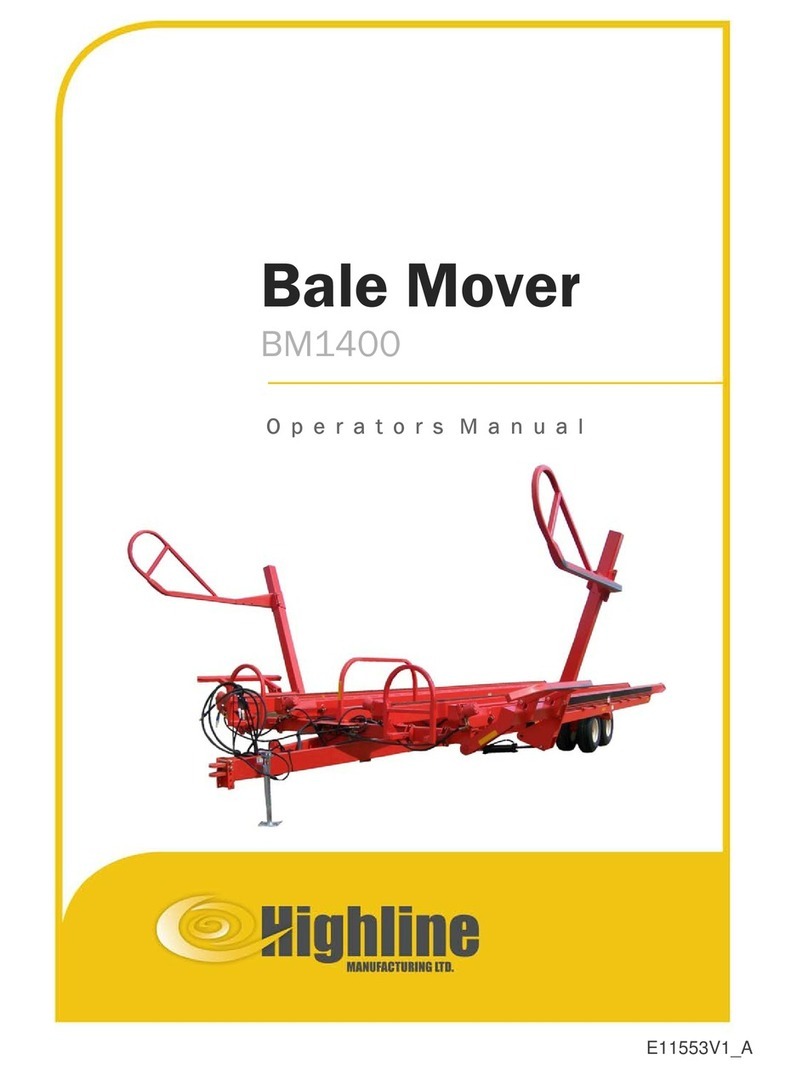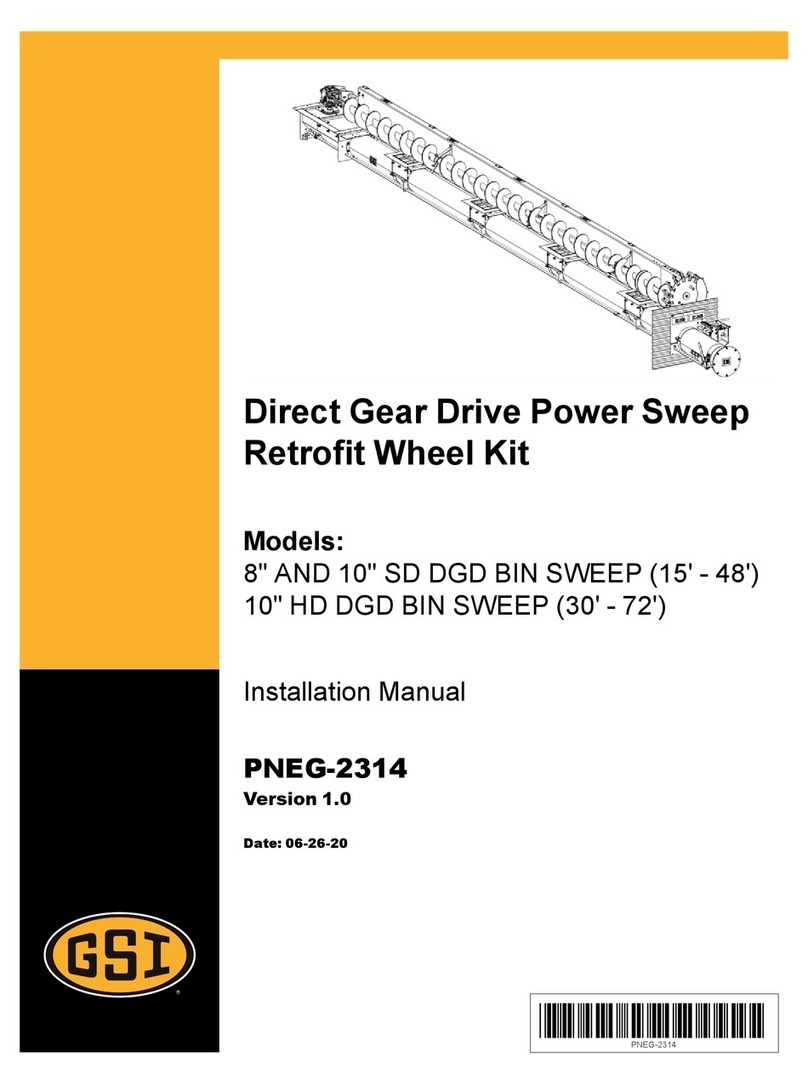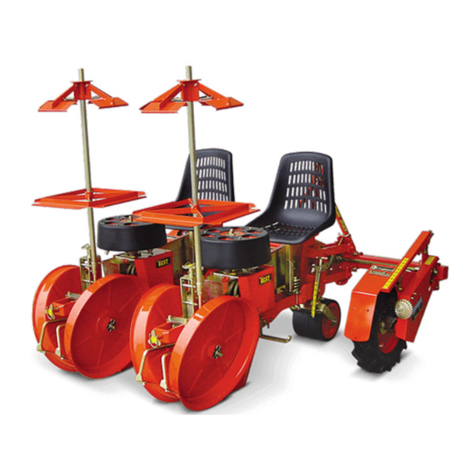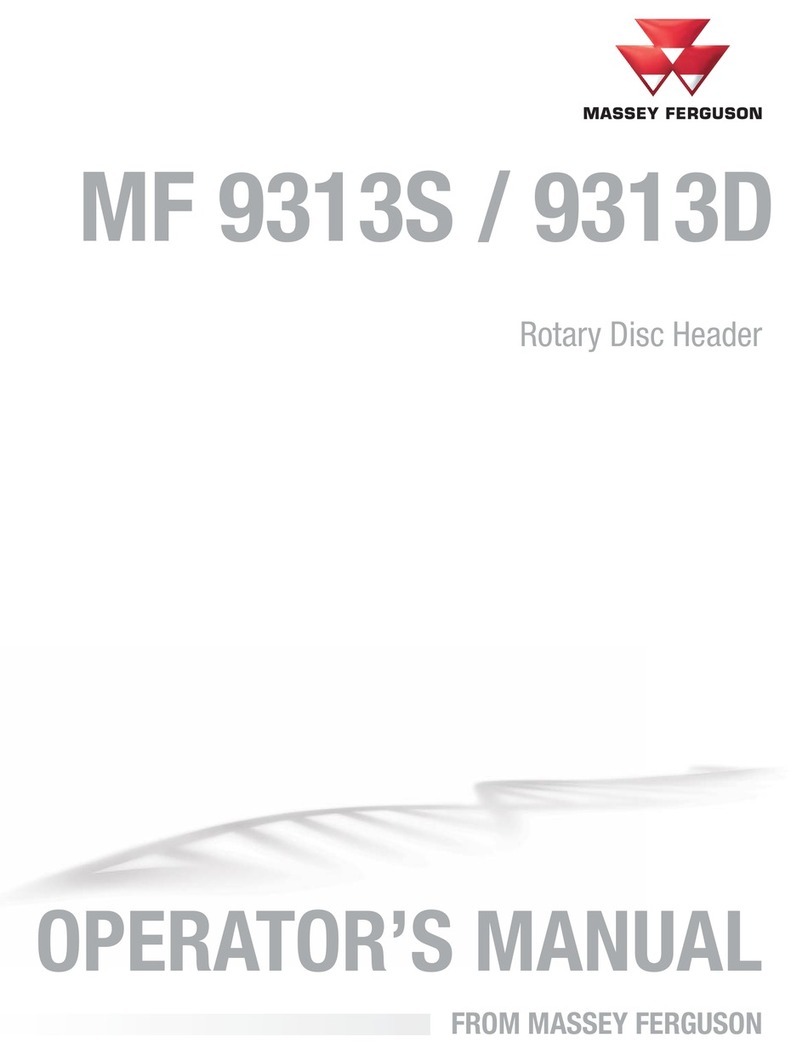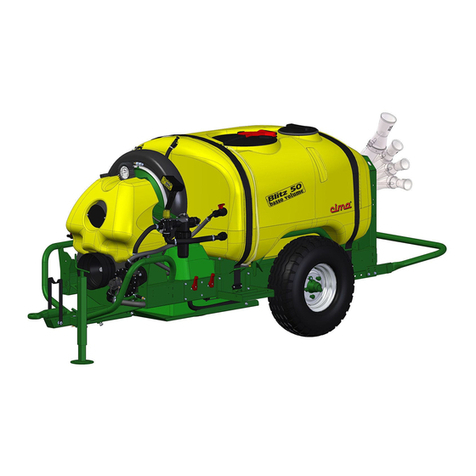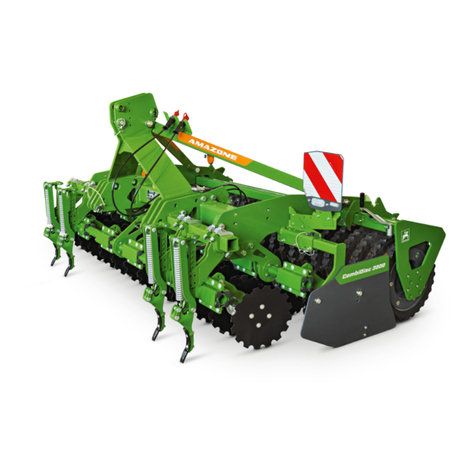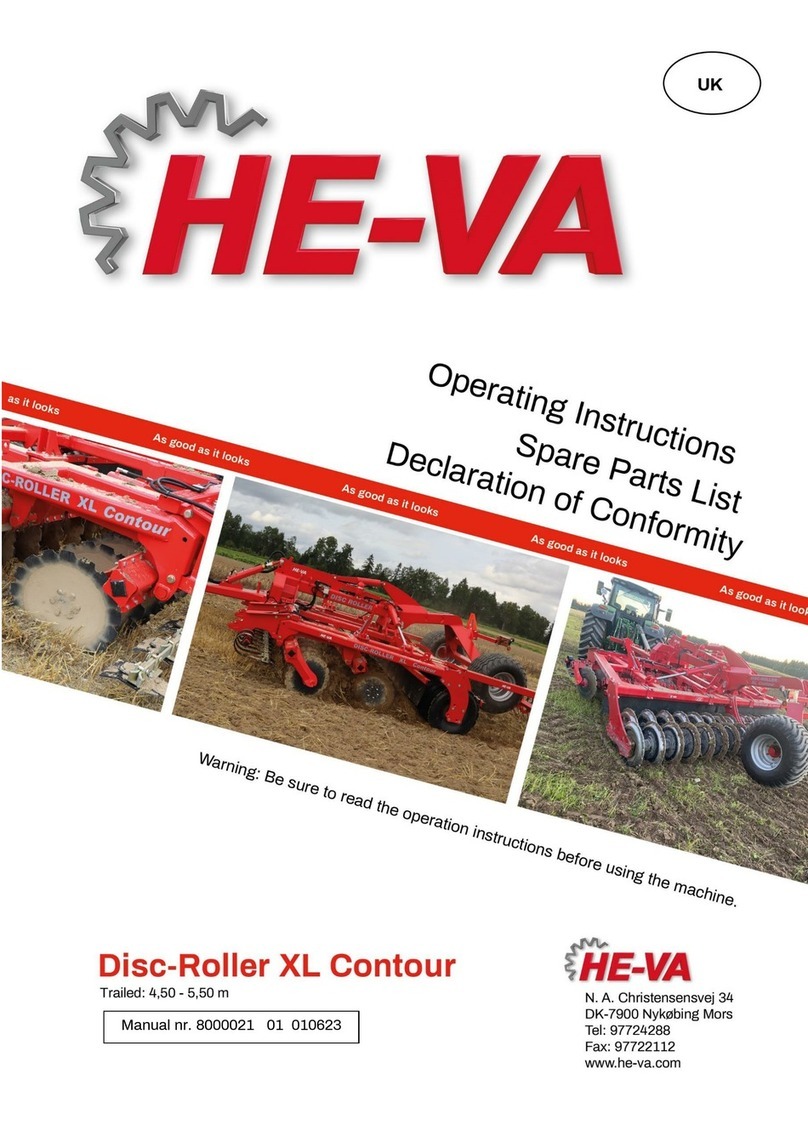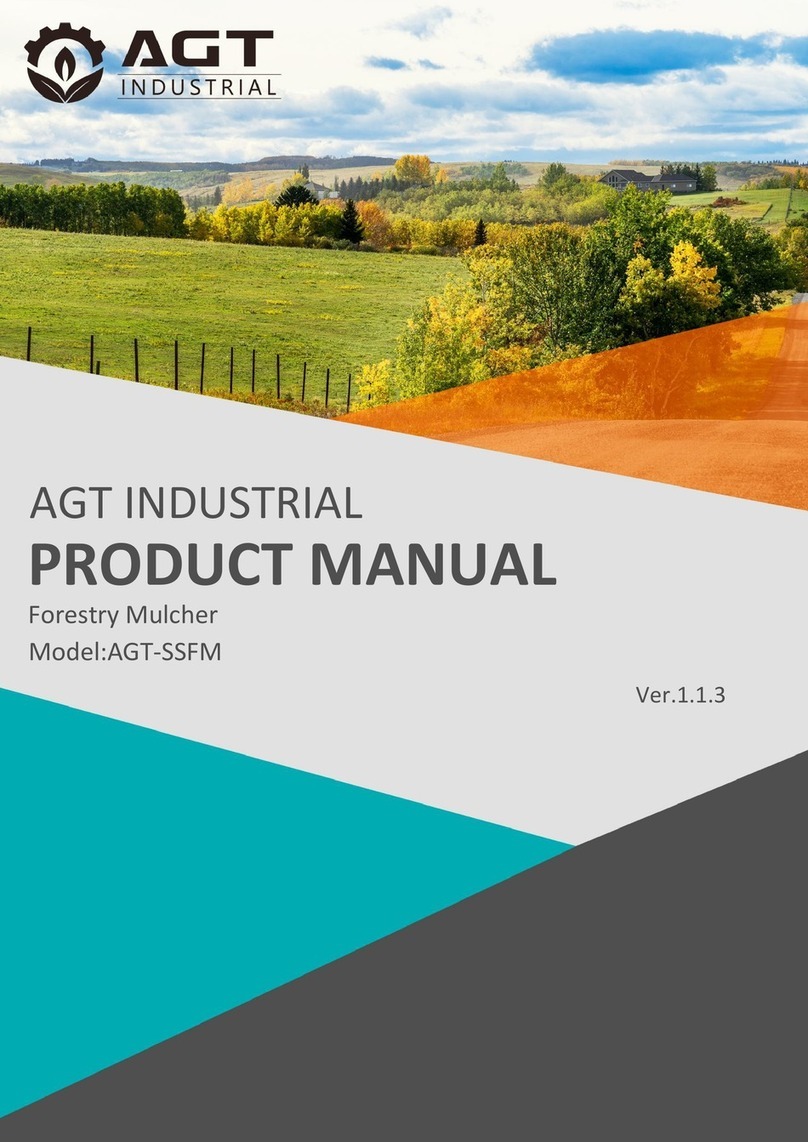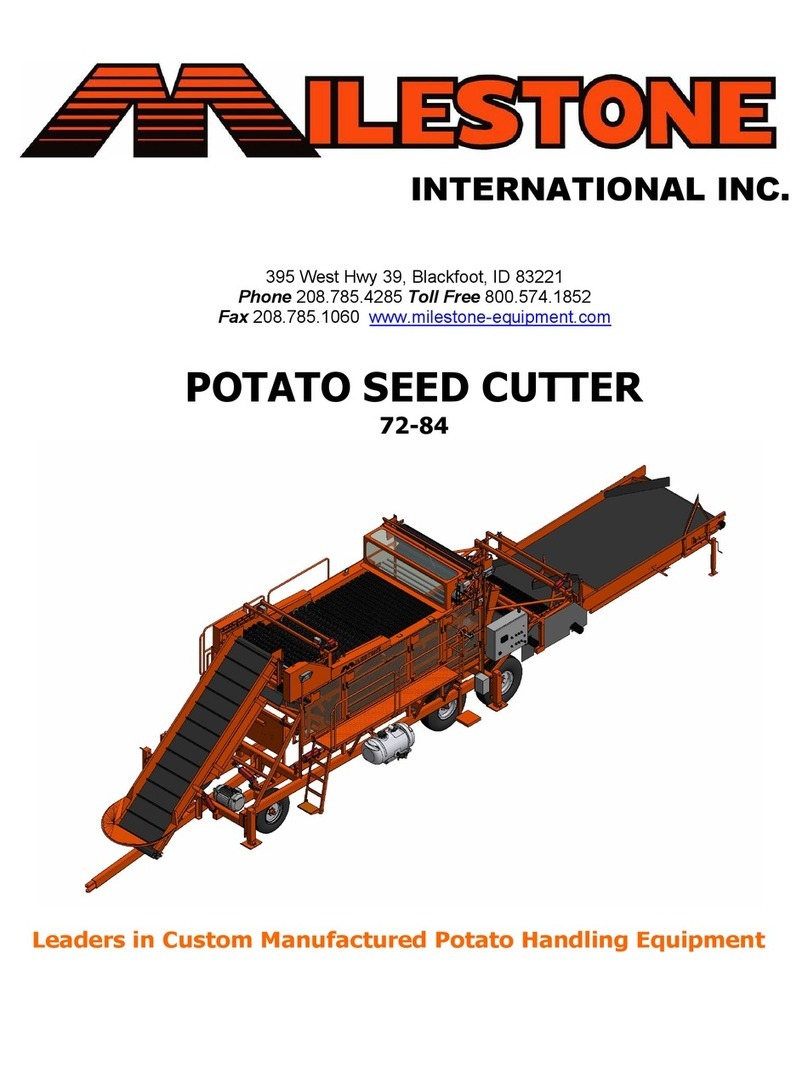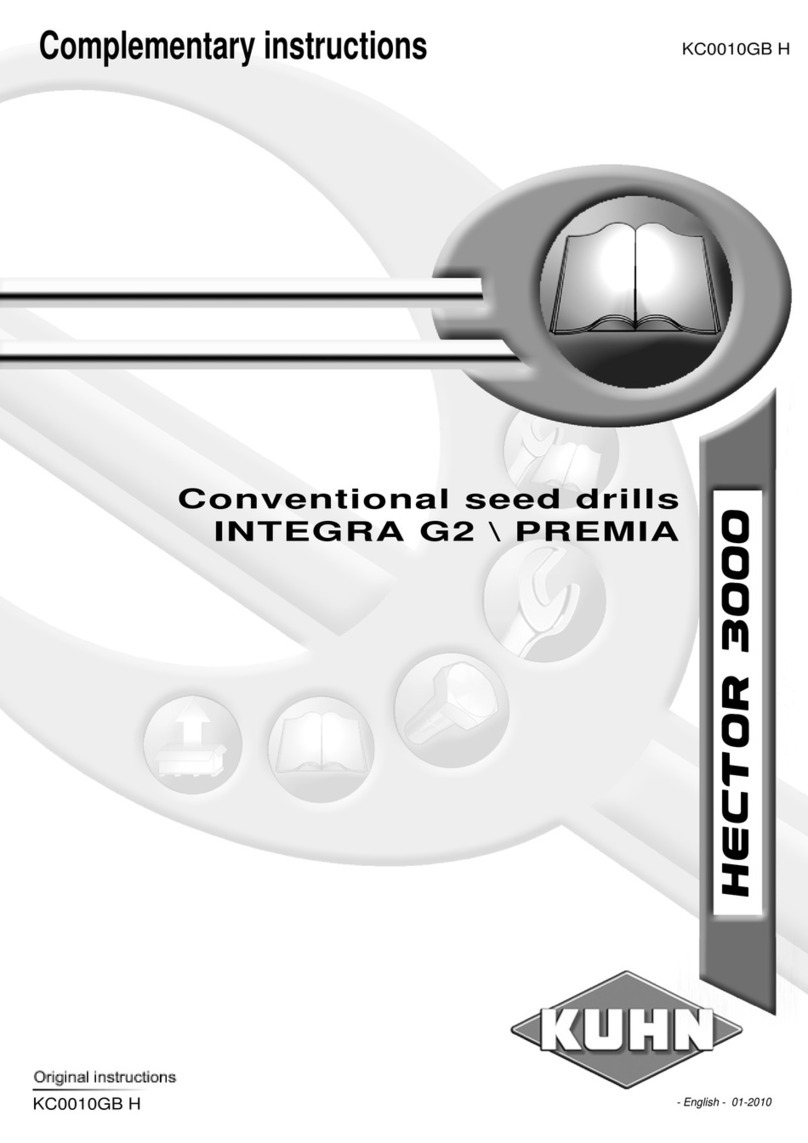3
Quality for Professionals
Table of contents
1 EC Declaration of Conformity ........................................................................................ 4
2 Provisions...................................................................................................................... 5
3 Warranty........................................................................................................................ 5
4 Accident prevention ....................................................................................................... 5
5 Transport on public roads (most important specifications) ............................................. 6
5.1 Loading and unloading........................................................................................... 6
6 Operating manual for APV GP 600 M1 .......................................................................... 7
6.1 Mounting on the tractor .......................................................................................... 7
6.2 Coupling ................................................................................................................ 8
6.3 Uncoupling............................................................................................................. 9
7 Layout and mode of operation ......................................................................................10
8 Working position and setting the working depth............................................................11
8.1 Depth adjustment / drawbar adjustment................................................................11
8.2 Adjusting the series of holes .................................................................................11
8.3 Levelling board .....................................................................................................12
8.4 Turning at the headland ........................................................................................12
8.5 Use of individual tools ...........................................................................................13
8.6 Folding lock...........................................................................................................13
9 Cropping tips for using the GP 600 M1 .........................................................................14
10 Maintenance and care ..................................................................................................15
10.1 General.................................................................................................................15
10.2 Changing the tines................................................................................................16
10.3 Tine safety ............................................................................................................16
11 Location of the rating plate............................................................................................16
12 Lubrication schedule.....................................................................................................17
13 Technical Specifications ...............................................................................................18
14 Road transport of the GP 600 M1 .................................................................................20
15 Lighting circuit diagram.................................................................................................20
16 Accessories ..................................................................................................................21
16.1 Compressed air system (only when ordered separately).......................................21
16.1.1 General .........................................................................................................21
16.1.2 Draining.........................................................................................................21
16.1.3 Readjusting the brake system .......................................................................22
16.1.4 Measuring the compressed air ......................................................................22
16.1.5 Pneumatic brake system diagram .................................................................23
16.2 Operating hours counter .......................................................................................24
16.3 Lighting with warning signs (on both sides)...........................................................24
16.4 Mounting kit for PS120 - 500.................................................................................24
16.5 Filling steps...........................................................................................................25
16.6 Toolbox accessories kit.........................................................................................26
16.7 Sensor set – Radar + lifting unit sensor for the GP 600 M1...................................26
17 My idea.........................................................................................................................31
18 Safety instructions ........................................................................................................32
18.1 Intended use.........................................................................................................32
18.2 General safety-related instructions and accident prevention regulations...............33
18.3 Mounted implements.............................................................................................35
18.4 Hydraulic system...................................................................................................35
18.5 Maintenance .........................................................................................................36
19 Safety signs..................................................................................................................37
